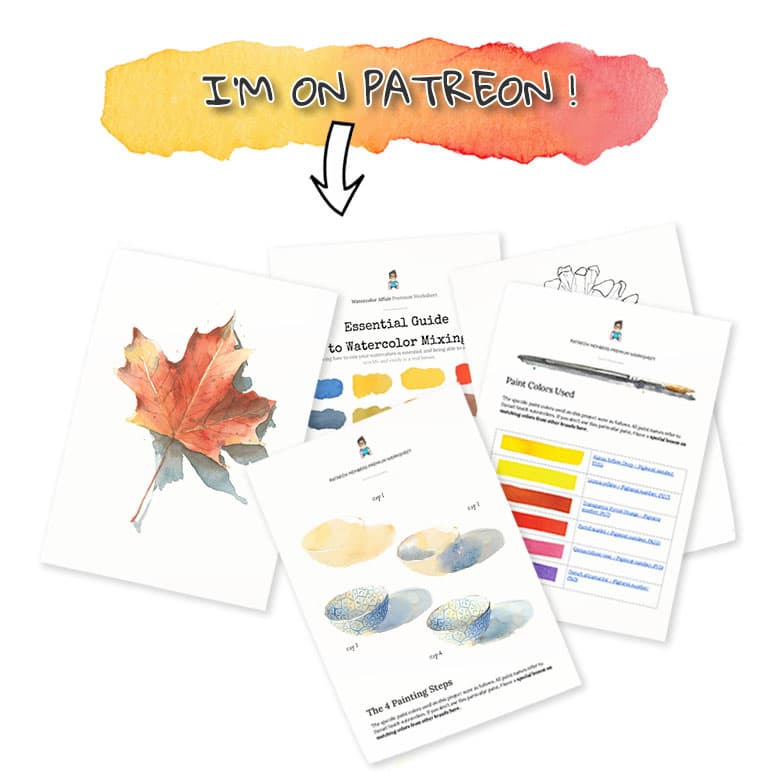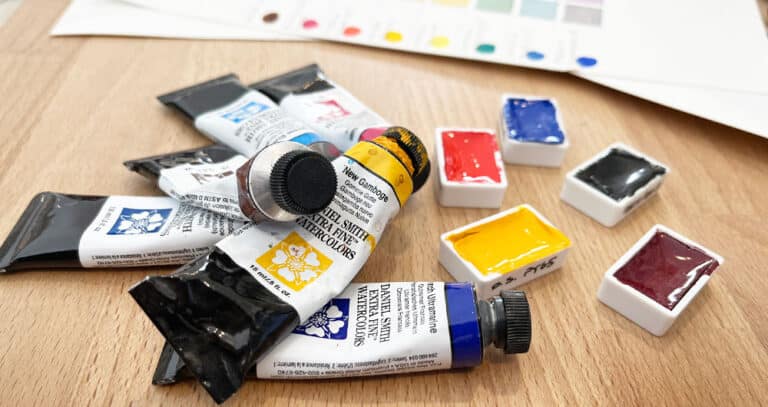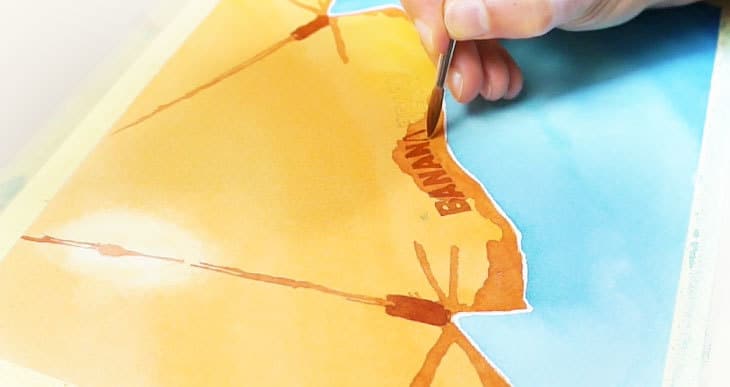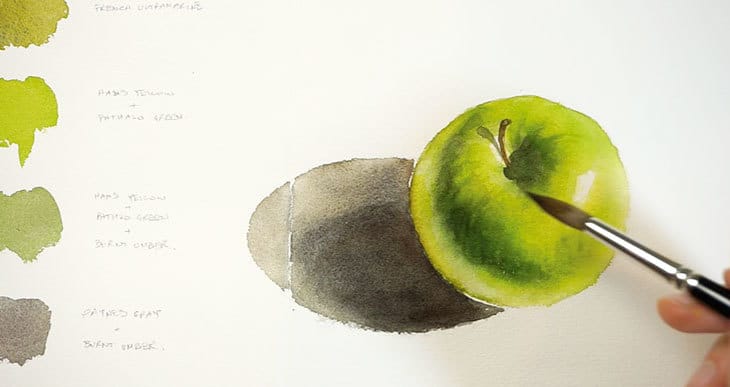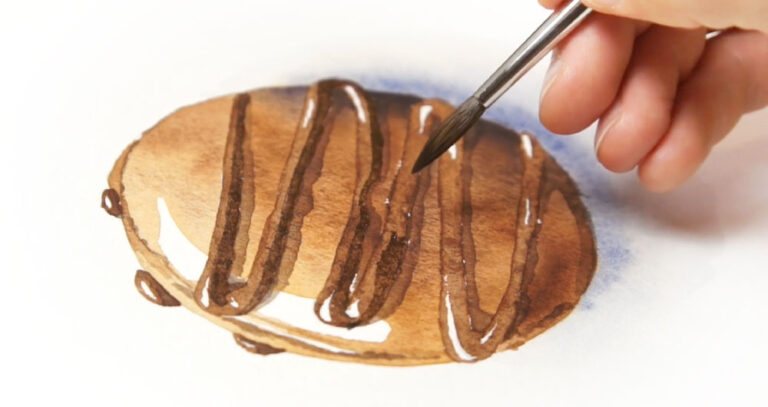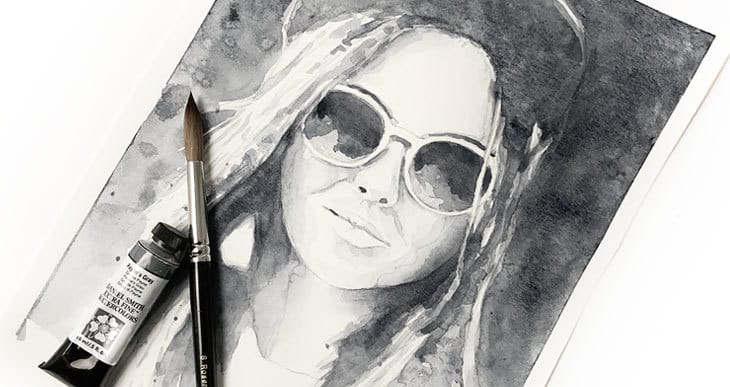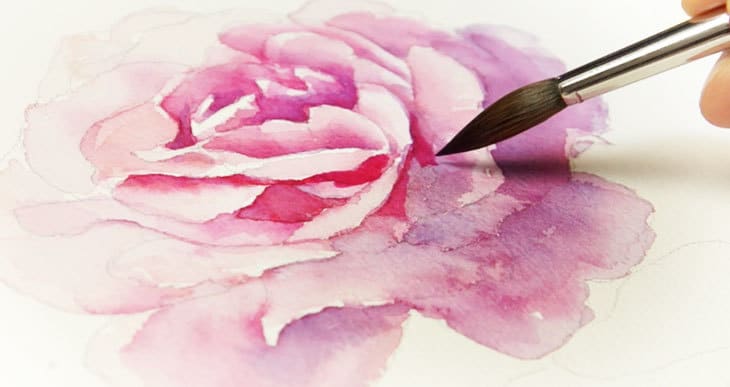What Should I Paint Today? (Foolproof Way To Find Inspo!)
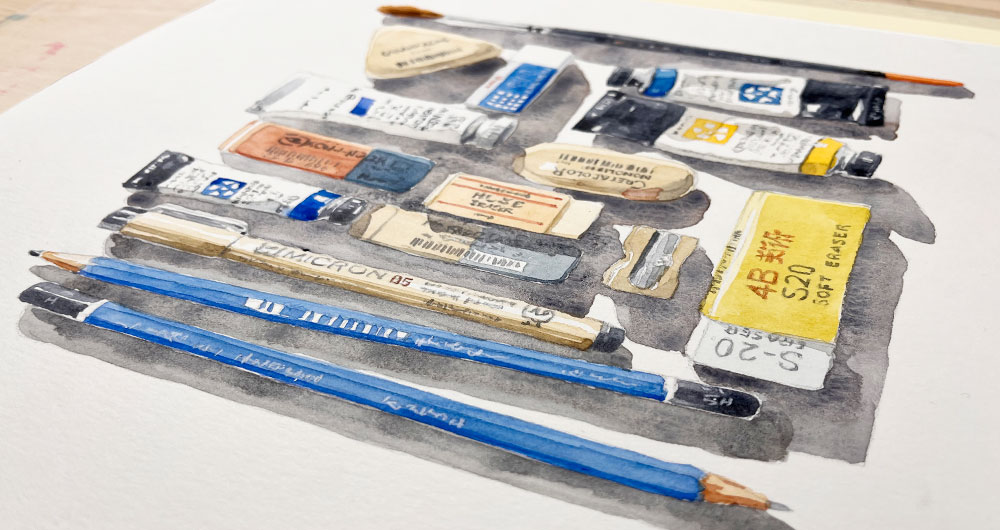
It’s not always easy to find inspiration and ideas for new subjects to paint.
All artists struggle with this dilemma at some point…
So in today’s tutorial I want to share a straightforward way of finding ideas for things to paint with very little effort.
This can be done anywhere, anytime. And it takes away some of the pressure to find the perfect thing to paint when you’re lost for ideas!
I call this the “Curated Compositions” method.
And it’s an excellent way to satisfy your creativity without having to think too hard 🙂
Finding Easy Ideas for What to Paint Today
So let me explain what I mean by “curated compositions”.
All you need to do is:
- Find a collection of roughly related objects.
- Then put them together in a grouped composition.
We all have drawers and cupboards stuffed full with various items like this. Some of them we rarely use or notice. Even when you’re outdoors there are usually plenty of options.
So why not use them as inspiration for your next painting!
What to paint (when you don’t know what to paint)?
Here are some suggestions:
When you’re indoors:
- Cutlery from a drawer
- Tools from a toolbox
- Spare buttons
- Old keys
- Jars of herbs and spices
- Perfume bottles or toiletries
- Items from a sewing kit
- Toys from a child’s room
- Cookies from your favorite brands!
- Wine corks
For outdoor ideas, you could try:
- Leaves from different trees
- Pebbles of various colors and shapes
- Bird feathers
- Twigs and branches
- Flowers and petals
- Pine cones
- Seeds or acorns
- Wild mushrooms
- Seaweed from the ocean
- Shells from the beach
You can also use objects that hold some kind of deeper meaning for you personally.
For example, if you have a pastime or activity that you enjoy regularly, you probably have tools, supplies and equipment that you can use to spark your imagination.
Or maybe you collect things?
These could be the ideal source of inspiration for your next painting.
Not surprisingly, for this painting demonstration I chose to make a composition of my art supplies 🙂
What To Paint (A Step by Step Tutorial)
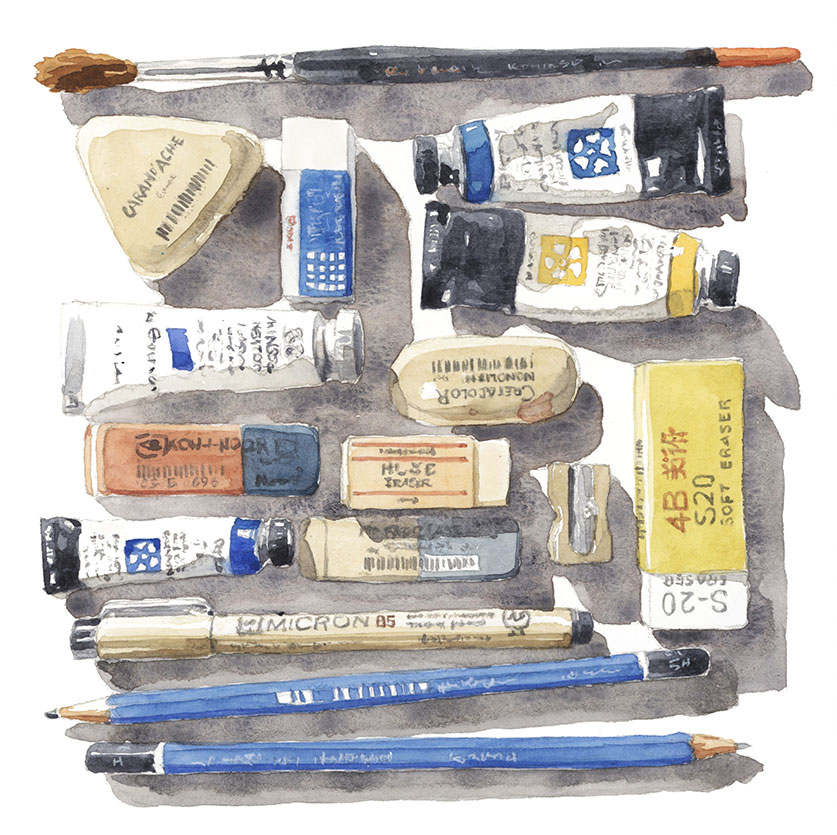
I have a lot of art supplies!
In fact, I probably have too many :-/
I can’t resist picking up new stuff to try whenever I go to an art supplies store.
After all… You can never have enough erasers – can you?!
As you can see in this little composition I put together a bunch of erasers, sharpeners, pencils, paint tubes and other art stuff to make an interesting geometric composition. I just arranged them in a square form, then took a photo from above.
This is a fairly detailed and intricate watercolor sketch. And if you’d like to try painting this same composition, as usual you can download a free outline sketch below.
Try This Painting Yourself!
If you’d like to try this painting yourself you can download the traceable outline for free below. I also offer a special series of free watercolor lessons for anyone who signs up to my email newsletter. This is entirely optional (you can skip this and just grab the free stuff below).
You’ll also find a link to my Patreon membership where you can get ad-free video tutorials, plus other exclusive bonuses that I only share with members of my Patreon channel. Follow the link to find out more...
My approach to painting all of these objects was to build up the layers of watercolor paint little by little. So most of the time I’m using a glazing technique, letting one object dry before applying a new layer of paint. I also tried to paint similar colored objects together so I wasn’t spending too much time changing my paint mixtures.
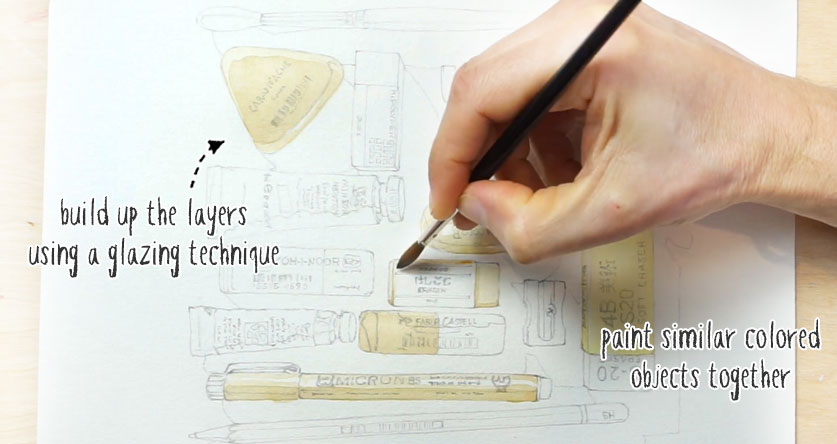
Another important aspect was to paint around subjects that are white, including any small highlights. If you haven’t already discovered this, in watercolor painting you don’t use white paint. Instead the paper provides the whiteness. This requires a bit of forward planning! Before laying down a brushstroke, I always ask myself which shapes I want to leave blank!
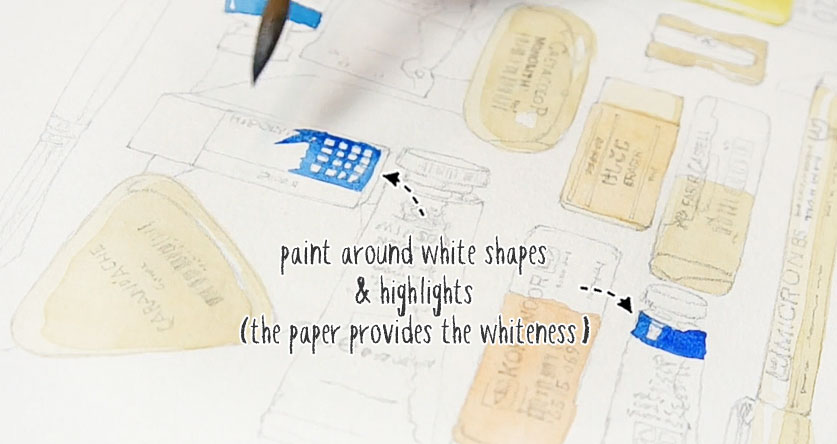
I added all the basic shapes first, then added darker brush marks to the places where I wanted to increase the shading, and improve the tonal depth of the object. When this was done, I added the cast shadows. This immediately adds contrast and depth to the painting. You’ll also see me use a technique called charging in when adding the shadows, this is where I dab in some stronger paint close to the edge of the objects to reinforce the darkness of the shadows there.
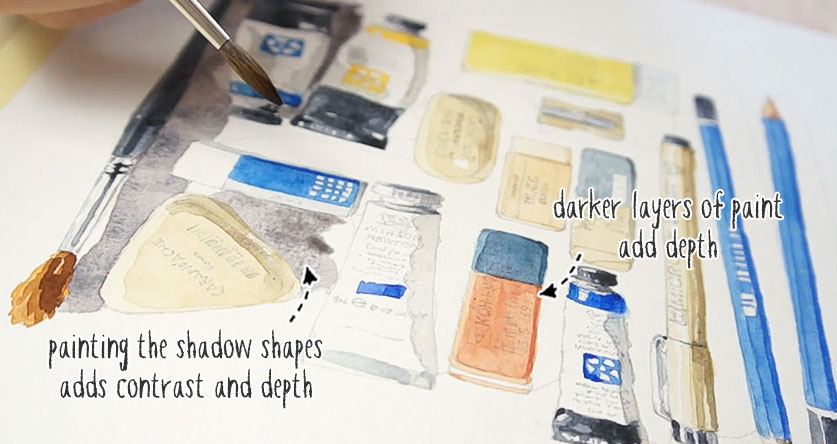
Afterwards I switched to a smaller brush to add the intricate details and writing on each of the objects. Note that I’m not always literally writing the words I see, rather I’m using scribbled brush strokes to give an impression of writing.
The final details were added with a white crayon on a dry surface.
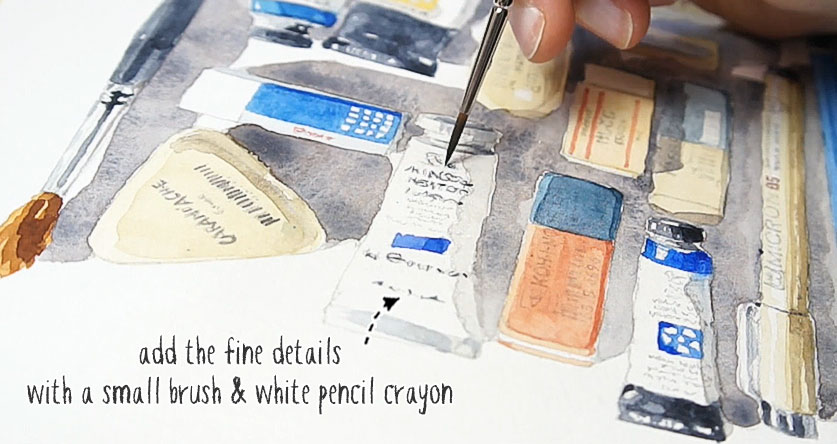
In the rest of this video you can watch the painting process from beginning to end! There’s a longer, more detailed version of this painting on my Patreon page. Keep in mind that I’m glazing the layers, so I often leave a shape to dry, before coming back to paint a new layer. Feel free to skip forward or pause and rewind if you want to see the way I built up this painting composition.
Conclusion (What to paint When you Have No Inspiration)
If you’re short on inspiration, and looking for something to paint today, I suggest you give the curated compositions method a try! Simply put together a collection of related objects and use them as the subject of your painting…
So next time you’re struggling to find ideas for what to paint, try this method and see where it takes you!

